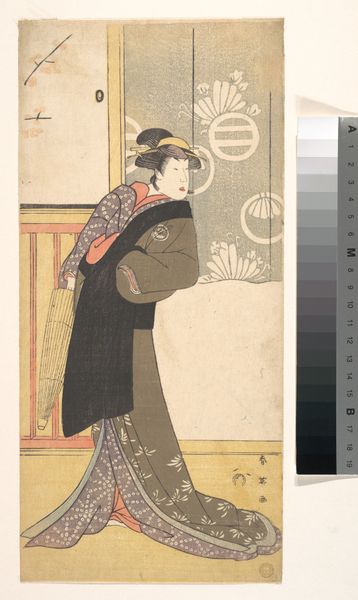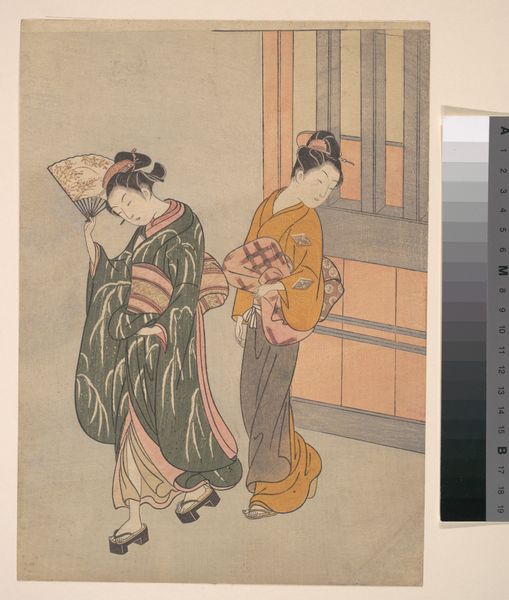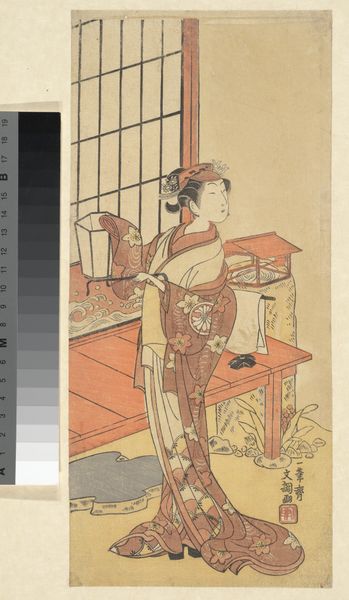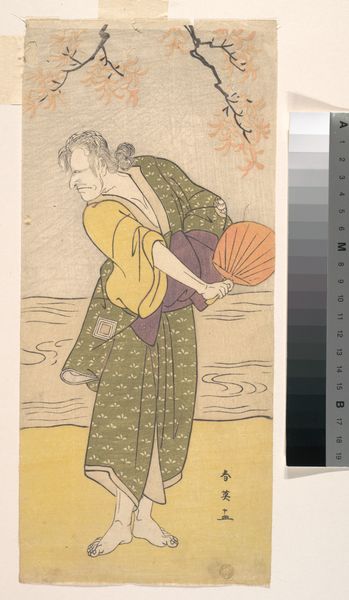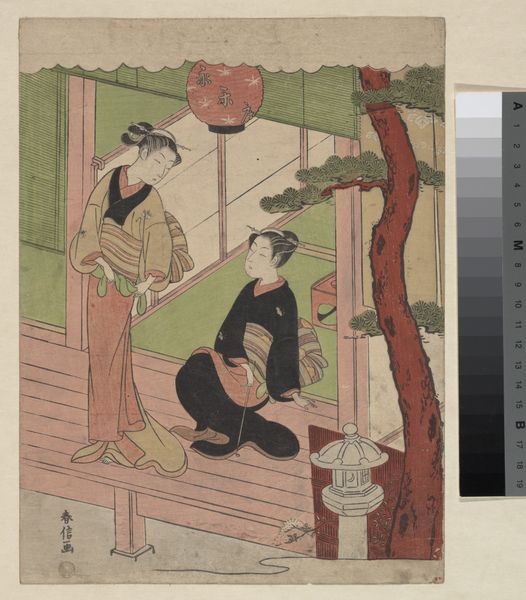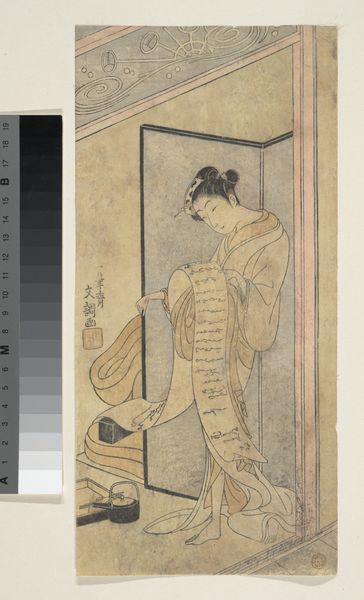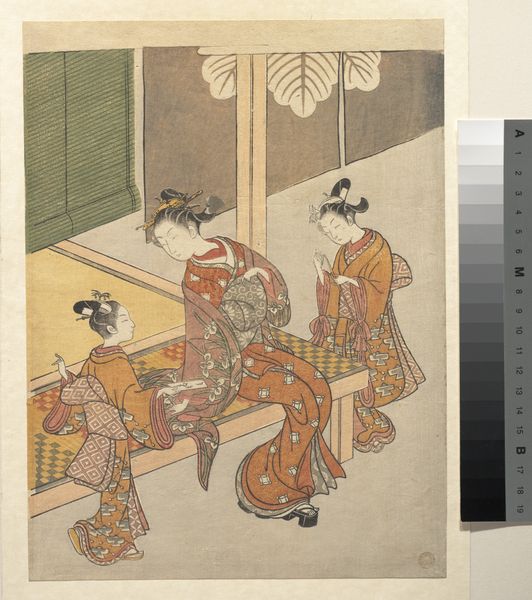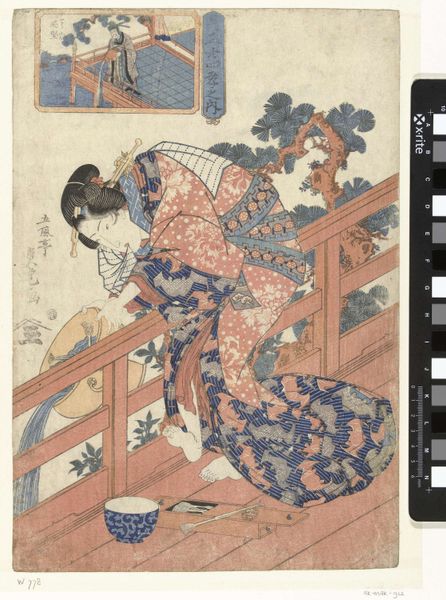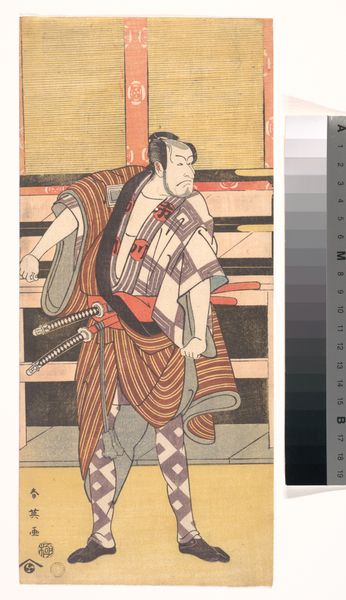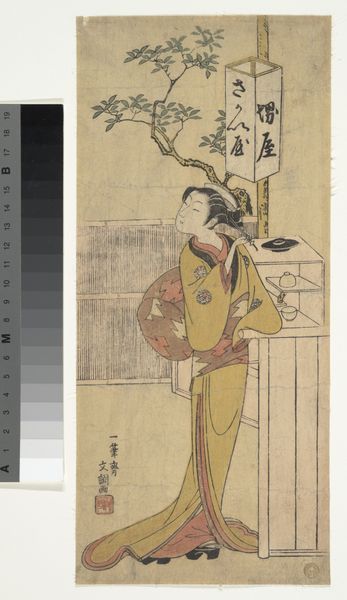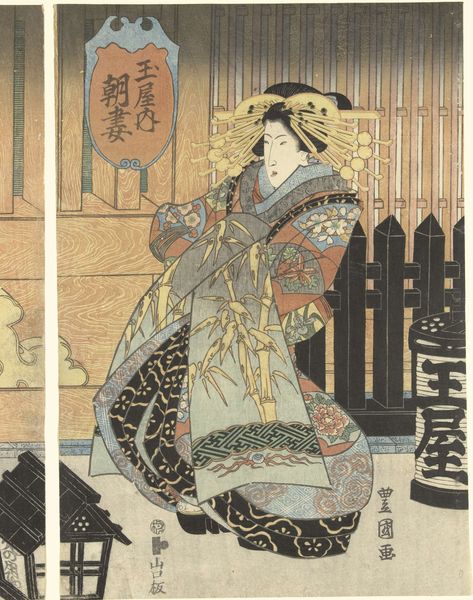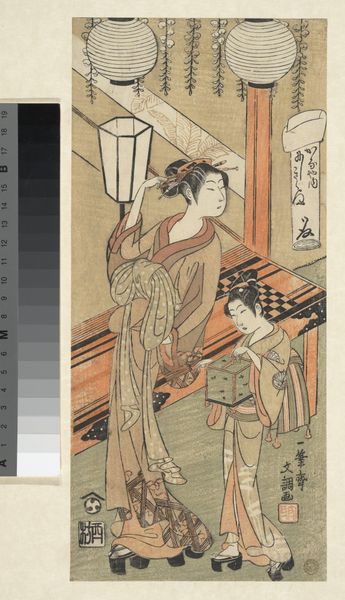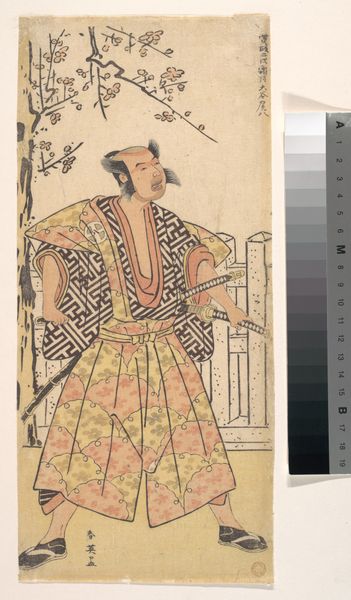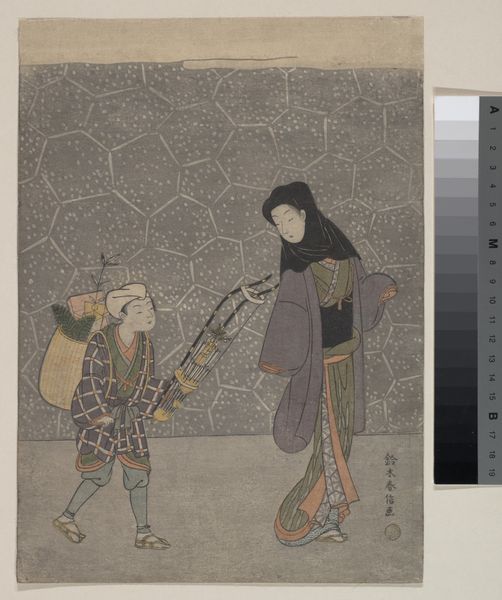
The Fourth Iwai Hanshiro as a Woman Standing under a Torii 1781 - 1801
0:00
0:00
#
portrait
# print
#
asian-art
#
ukiyo-e
#
figuration
Dimensions: 12 3/4 x 5 5/8 in. (32.4 x 14.3 cm)
Copyright: Public Domain
Curator: Here we have a work by Katsukawa Shun'ei, a print titled "The Fourth Iwai Hanshiro as a Woman Standing under a Torii," likely created between 1781 and 1801. Editor: She’s beautiful and slightly…off. The bowing posture combined with her steady gaze is strangely unsettling and compelling. Curator: It’s the tension between those elements, isn't it? It pulls you in. In Ukiyo-e prints such as this one, actors were often subjects, much like celebrities today, thus it’s likely viewers were quite familiar with Iwai Hanshiro. But Shun'ei also plays with traditional symbolism. Editor: Yes, the Torii gate itself immediately comes to mind – it's a symbol that marks the entrance to sacred space, suggesting a transition or transformation. What does that say about the portrayal of the actor, a man performing as a woman? Curator: Precisely! This blurring of lines would've challenged contemporary audiences’ perceptions. Is this gender performance sacred? Transgressive? The composition certainly uses cultural iconography to deepen that inquiry. Editor: Absolutely. The delicate cherry blossoms hint at ephemerality, while her patterned kimono, detailed hair, and the architecture all contribute to this sense of crafted artifice, and therefore deliberate, layered identity. It underscores the conscious act of becoming. Curator: Ukiyo-e prints gained popularity because of their accessibility and depictions of everyday life and popular culture. Shun'ei captured something far more complex here. Editor: Indeed, it presents performance as a space for challenging gender roles, all through careful employment of color, line and cultural symbols to communicate layered concepts of performance. Curator: I find the ambiguity deeply powerful. It encapsulates societal tensions and celebrates artistic craft, using the actor’s likeness to unpack performance itself. Editor: Looking closer helps us to see not only how far we’ve come but perhaps also, to what extent similar dialogues still reverberate within culture today.
Comments
No comments
Be the first to comment and join the conversation on the ultimate creative platform.
